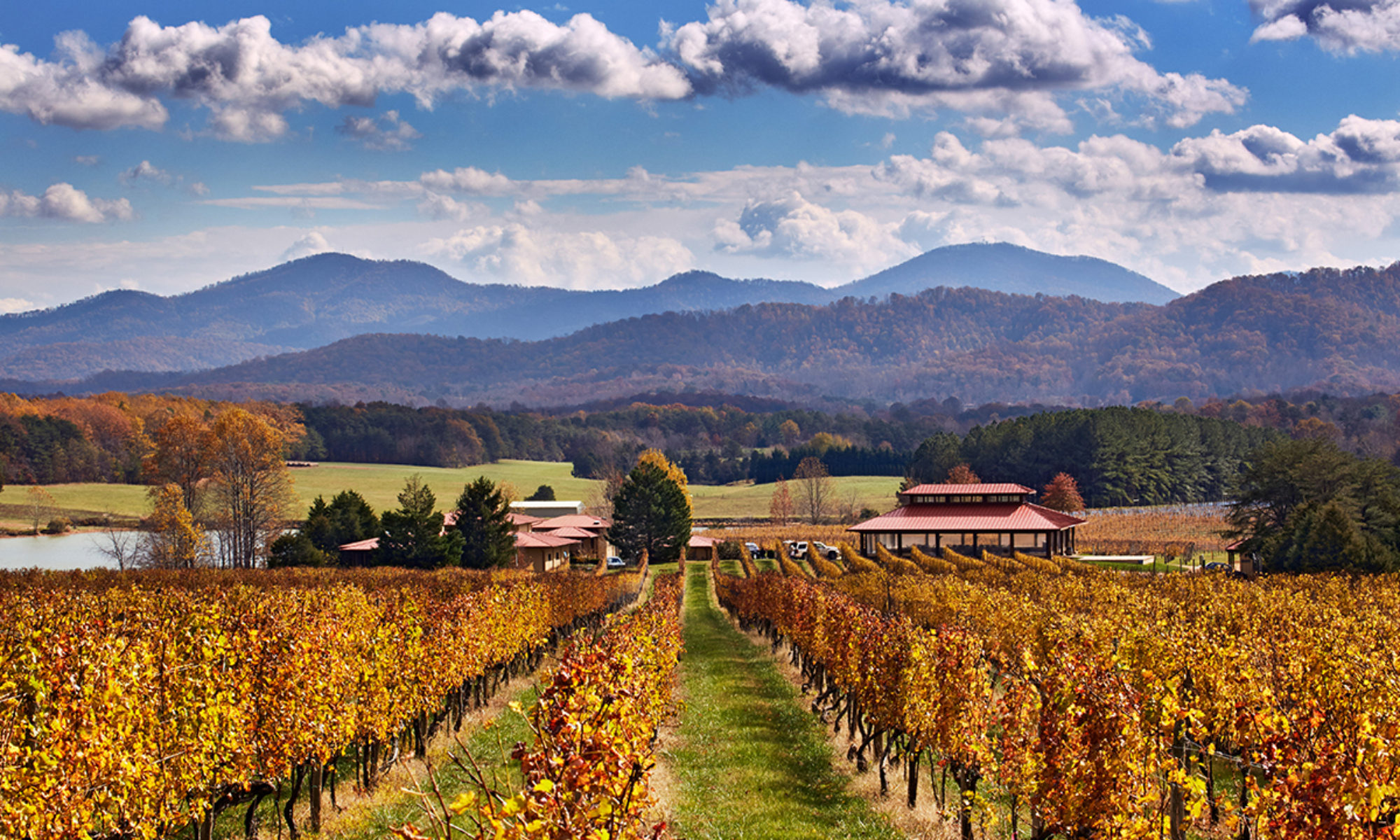Located between Crozet and White Hall, northwest of Charlottesville, at an 800-foot elevation. Started in 1992 by Tony and Edie Champ, White Hall has grown from its initial small six acres to a now considerable 48 acres of vines. Aside from making their own wines, White Hall is also a large supplier of grapes to other local wineries.
Wine. Tier II. Viognier has been the hallmark of White Hall Vineyards (see below). The Champs aim for a more fruit-forward taste in their wines than many other Virginia winemakers. Winemaker Michael Panczak hails from California, and has brought some of that state’s rich style here. Aside from the Viognier, White Hall produces Chardonnay, Pinot Gris, Gewurztraminer, Merlot, Cab Franc, Cab Sauvignon, and Petit Verdot. The Edichi is a dessert wine. A substantial portion of White Hall’s large-scale grape production is sold to other vineyards.
Setting. A large fireplace in the indoor tasting room. There are great views on the drive into the winery, though the best views over the Blue Ridge are from the private event room upstairs.
Stories. Making Wine in Virginia: Viognier, the State Grape. White Hall Vineyards began their plantings with Viognier, and it remains their “benchmark wine.” Viognier is one of the few white wine grapes, like Chardonnay, which can produce full-bodied wines with plenty of character. It is also capable of producing very different tastes than Chardonnay, with more bouquet of white flowers and violets, and fruitiness tasting of peach or pear. A few Viognier wines, especially those from old vines and the late-harvest wines, are suitable for aging, but most are intended to be consumed young. Viogniers more than three years old tend to lose many of the floral aromas that make this wine unique. The grape’s relative rarity is due in part to difficulties in finding the right conditions for it to prosper. In warm climates, it can become highly alcoholic, and lose the nuances in taste and fragrance that help make it popular. At the same time, it is prone to spring frost damage, and to vines being killed in cold winters. It runs out that north and central Virginia can produce the right medium for this “goldilocks” grape. Up through the end of the 20th century, Viognier was hard to find. In its native Rhone Valley, where it is thought to have been brought from Dalmatia by the Romans, it produces a superb yellowish white wine called Condrieu, after the village where it is produced. But quantities are small, and as recently as 1965 a survey reported only 8 acres of Viognier being grown in the Rhone. Its popularity began to grow among consumers and producers in the last decades of the 20th century, notably in the Rhone and Languedoc in France, Australia and California. Viognier’s big home run, however, has been hit in Virginia. Viognier was named Virginia’s official grape in 2011, and by 2016, over 80 wineries in Virginia produced Viognier, with close to 300 acres planted in the state. The density and variety of Viognier in Virginia is unmatched anywhere. Enjoy it!
